#tales of mystery and imagination
Photo

'Fall of the House of Usher' from Poe's 'Tales of Mystery and Imagination "retold by Margaret Naudi, 1993 by Ian Miller
4K notes
·
View notes
Text

The Tell-Tale Heart, from Poe's Tales of Mystery and Imagination by Harry Clarke (1919)
#harry clarke#art#illustration#art nouveau#1910s#1910s art#vintage art#vintage illustration#vintage#irish art#irish artist#books#book illustration#edgar allan poe#the tell tale heart#tales of mystery and imagination#horror#horror art#golden age of illustration#classic art
857 notes
·
View notes
Text

Edgar Allan Poe - Tales of Mystery and Imagination (Pan Books, 1961)
#edgar allan poe#the master#tales of mystery and imagination#horror books#skull#spiders#vintage paperbacks
92 notes
·
View notes
Text

Alan Parsons Project, Tales Of Mystery And Imagination, 1976
32 notes
·
View notes
Text

Edgar Allan Poe’s Tales of Mystery and Imagination
Artist : Harry Clarke
611 notes
·
View notes
Text
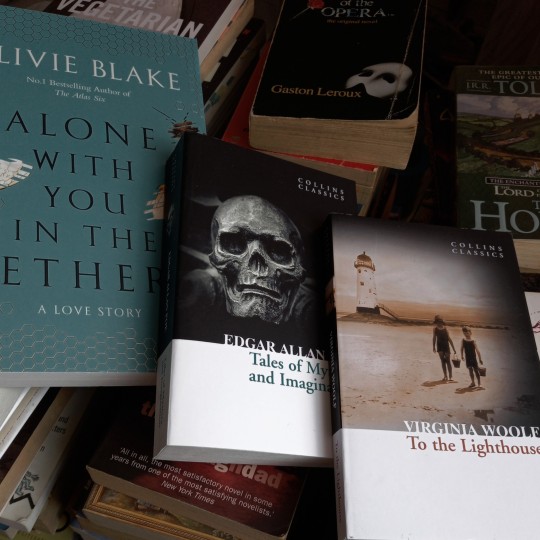


24.03.2023 I'm sorry for the lack of update, my schedule becomes so hectic especially when it's now Ramadhan. Bought new books and won some tropical scented candle.
#student#studyblr#studyinspo#studies#post grad life#chaotic academia#dark academia#post graduate#study motivation#candles#alone with you in the ether#tales of mystery and imagination#to the lighthouse#olivie blake#edgar allan poe#virginia woolf#literature#lit#books#new books#study blog#bookblr
26 notes
·
View notes
Text
Just in time for 🎃
The Alan Parsons Project (1st album) idea was to turn Edgar Allen Poe's writing into modern music. It's genius.
Two of the best song below...
youtube
and
The System of Dr. Tarr & Professor Feather... a story about letting the 'crazy' people run the asylum.
(This song really rocks and was the encore song when they played live in my area.)
youtube
(I picked the videos with the best visuals since the music is the same. )
#alan parsons#alan parsons project#first alan parsons album#tales of mystery and imagination#Youtube
6 notes
·
View notes
Text
"The death of a beautiful woman is unquestionably the most poetical topic in the world," wrote Edgar Allan Poe
According to Poe the most melancholic and poetic event that could happen in life was the death of an ethereal, unnaturally beautiful woman who did nothing but radiate beauty and have eyes brimming with sorrow being diagnosed with a fatal disease, and becoming emaciated, thus leaving her lover heartbroken.
(As seen in his short stories: Berenice, Eleonora, Ligeia, The Oval Portrait)
#edgar allan poe#goth#gothic fiction#literature#english literature#unpopular thoughts#unpopular opinion#women#beauty in death#deathcore#dark academia#berenice#tales of mystery and imagination
8 notes
·
View notes
Photo

Storia Di Musica #262 - The Alan Parsons Project - Tales Of Mystery And Imagination Edgar Allan Poe, 1976
La seconda storia di dischi letterari si lega a doppio filo con quella dei Pink Floyd, Storia #261. C’è una storia di grande passione per la musica: a 16 anni, per un piccolo lavoro part-time, Alan Parsons lavora al magazzino duplicazione nastri della EMI a West London. Si mette subito in mostra per l’abilità e per la dedizione, tanto che già l’anno successivo è mandato agli studi di Abbey Road, dove cura i master di niente di meno che Sgt.Pepper’s Lonely Hearts Club Band dei Beatles. George Martin, che era uno sveglio, lo nota e lo vuole a suo fianco come ingegnere del suono per le registrazioni di Let It Be e di Abbey Road: Parsons tra l’altro è l’assistente di studio del leggendario concerto improvvisato sul tetto degli studi di registrazione, ed è lì con i Fab Four nel loro “commiato” come gruppo. Diviene uno degli ingegneri capo degli Abbey Road Studios: lavora a capolavori come All Things Must Pass di George Harrison e McCartney di Paul, ed inizia una piccola collaborazione con i Pink Floyd, prima con alcune registrazioni di Ummagumma e Meddle, poi a dirigere le estenuanti e intensissime sessioni per The Dark Side Of The Moon (che durarono oltre 6 mesi, più 3 di post produzione), il cui successo clamoroso farà di Parsons un nome di qualità per l’ingegnerizzazione del suono. Produce infatti moltissimi artisti emergenti e non, tra cui Ambrosia, The Hollies, John Miles e i primi dischi, di grande successo, di Al Steward (inclusi i due più famosi, Time Passages e Year Of The Cat). Nel 1975 ha l’idea di fondare un suo gruppo: lui cura tutta la parte musicale e di produzione, Eric Woolfson quella di scrittura, Andrew Powell le orchestrazioni e gli arrangiamenti, chiamando di volta in volta il meglio dei sessionisti e di cantanti a lui cari, che casomai in quel periodo stavano lavorando con lui. La musica de The Alan Parsons Project si inserisce nel filone del pop rock sinfonico, che stava nascendo in quegli anni con grande successo dalle braci meno ardenti del prog, con largo uso delle tastiere elettroniche, orchestrazioni imponenti, atmosfere barocche e massicce, con testi che pescano anche riferimenti altisonanti. Infatti i primi lavori sono concept album che si ispirano a cose niente affatto scontate. il disco che ho preso in considerazione oggi è il loro primo Lp, Tales Of Mystery And Imagination (1976) che si ispira alla omonima raccolta di racconti del grande Edgar Allan Poe. Il lavoro di Poe è stato uno dei riferimenti letterari più utilizzati nel corso del tempo nella musica rock e non solo: un esperimento simile lo fece Lou Reed con The Raven, il suo ultimo album da solista del 2002, che si ispira in parte ai racconti dello scrittore americano, ma non ha l’organicità del lavoro della Alan Parsons Project. Che infatti oltre a nominare i 7 dischi utilizzando il titolo di racconti di Poe, ne segue anche la trama, con Woolfson che spesso utilizza intere frasi dei racconti come testo. C’è anche un grande plus: durante le registrazioni del 1976, Parsons chiama Orson Welles a recitare alcuni passi da inserire nel disco come prologo alle musiche: tuttavia nella prima edizione del 1976 non compaiono, e vengono rispristinate solo nella ristampa del 1987, curata nella rimasterizzazione dei nastri originali dallo stesso Parsons. Welles legge prima di A Dream Within A Dream', il primo brano strumentale, un oscuro pezzo di saggistica di Poe, il numero XVI dei suoi Marginalia pubblicato tra il 1845 ed il 1849. Il secondo passaggio che Welles legge precede il brano The Fall Of The House Of Usher - Prelude, ed è una parafrasi parziale dalla saggistica di Poe, presa da una raccolta. Il brano che prende spunto da Il Crollo Di Casa Usher è una lunga suite in 5 parti (Prelude, Arrival, Intermezzo, Pavane, Fall), è il clou del disco, che però offre anche altre cose interessanti: in The Raven Alan Parsons divide il canto con Leonard Whiting, recentemente ritornato alla ribalta, poichè oltre che cantante fu anche attore principale del Romeo E Giulietta di Franco Zeffirelli, accusando dopo 5 decenni gli eredi del regista di “violenza psicologica” per le scene di nudo di quella pellicola; The Tell-Tale Heart vede come protagonista vocale Arthur Brown, leader della band The Crazy World of Arthur Brown, il quale diventerà famoso per le esibizioni con il fuoco durante i suoi show, più l’apporto ai cori di Jack Harris, che diventerà fido collaboratore negli anni dell’ APP; The Cask Of Amontillado e (The System of) Dr. Tarr And Professor Fether (tra l’altro due tra i racconti più belli di Poe) hanno la voce di John Miles, mentre To One In Paradise quella di Terry Sylvester degli Hollies, la band che Parsons contribuì a lanciare definitivamente. Partecipano alle registrazioni anche gli Ambrosia e i Pilot, altri gruppi curati da Alan Parsons. Che nel mentre si registrava il disco, ebbe anche tempo di lavorare a Tubular Bells di Mike Oldfield. Parsons usa anche uno dei primi vocoder (la sua voce modificata in The Raven per esempio) e nella suite The Fall Of The House Of Usher si rifà nientemeno che a Debussy, il quale nel 1908 scrisse una La Chute De La maison Usher ispirandosi egli stesso al racconto di Poe. Il disco ha anche una copertina particolarissima disegnata dai geni della Hipgnosis: tutta verde, ha una striscia luminosa che fa intravedere l’ombra di un uomo, la striscia continua sul retro dove c’è il disegno di due uomini bendati come mummie in un paesaggio che sembra egiziano, idea che vuole trasmettere uno dei punti chiave della narrativa di Poe, l’essere bloccati o sepolti vivi (nel racconto de Il Barile Di Amontillado, è uno dei temi principali per esempio). Il disco uscirà con le migliori recensioni, e avrà successo in Europa (in Germania è uno dei dischi più venduti degli anni ‘70 in assoluto), Canada e Gran Bretagna. Il percorso di ispirazione letteraria continuerà anche nel secondo disco, I, Robot, del 1977, ispirato all’omonimo racconti di Isaac Asimov, che ebbe anch’esso notevole successo. Il percorso della Alan Parsons Project continuerà con numerosi dischi anche per tutti gli anni ‘80, dove ad una produzione musicale ancora più pomposa e sfarzosa si assocerà il tentativo di comunicare “messaggi concettuali”, come i messaggi astrali di Eye In The Sky (1982), dei pericoli della civiltà industriale di Ammonia Avenue (1984) o le oscure simbologie di Vulture Culture (1985).
17 notes
·
View notes
Video
The Alan Parsons Project - Tales Of Mystery And Imagination (Full Album LP)
não confie em quem não acredita na supremacia TAPP
#youtube#the alan parsons project#tales of mystery and imagination#prog rock#music#edgar allan poe#raven
5 notes
·
View notes
Text
A few days ago, my beloved gifted me this handsome gilt-edged copy of Tales of Mystery and Imagination by Edgar Allen Poe, as an early birthday gift since he knows I enjoy his works. This particular version contains illustrations by Harry Clarke and an introduction written by Neil Gaiman.

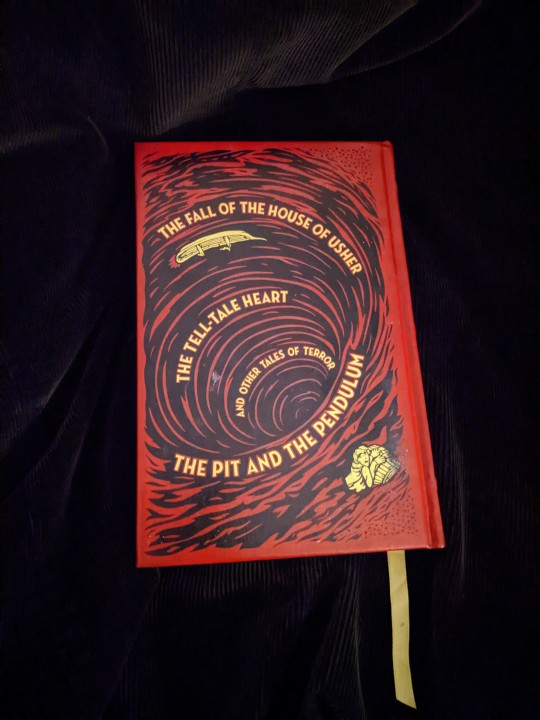
It has been a very long time since either of us has read Poe, so we decided to start making it a cozy nightly ritual where I read the text aloud to him as we lay in bed and share in the viewing of the lovely and detailed illustrations.
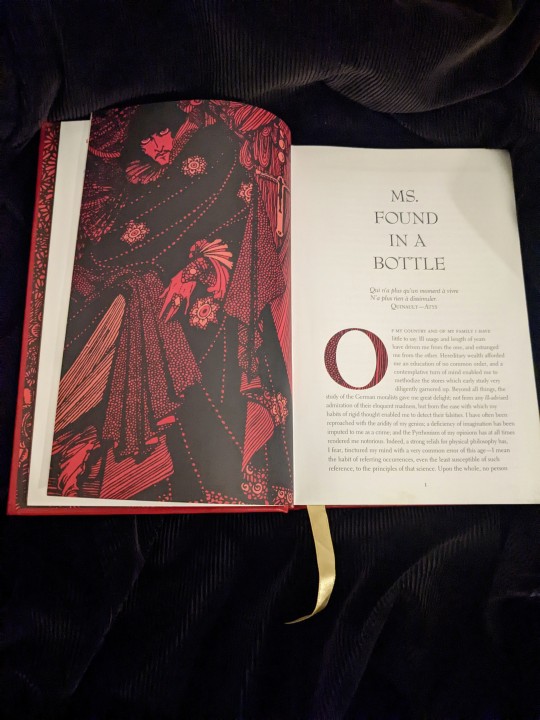

These are just a couple of the illustrations to adorn the pages in this book. I have to resist the urge to flip through the rest of them, since I want to enjoy them as they come through the course of the reading. Perhaps I will share more of them as the reading progresses.
9 notes
·
View notes
Text
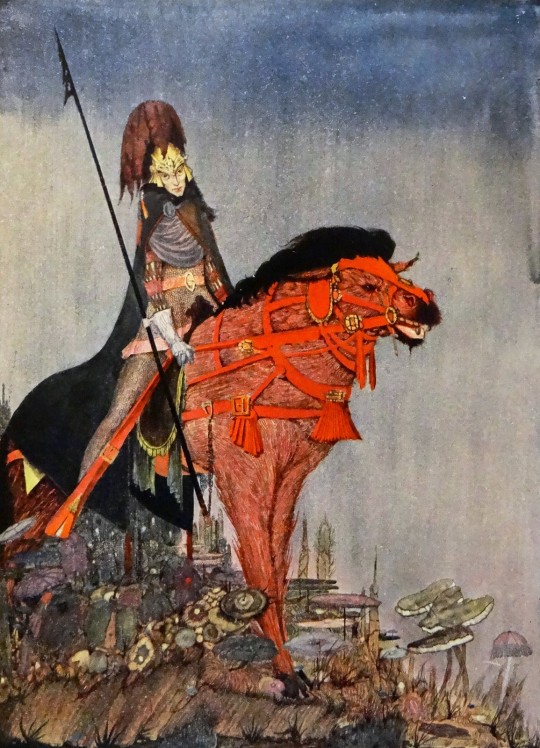
Illustration for Edgar Allan Poe's 'Tales of Mystery and Imagination' by Harry Clarke, 1923
612 notes
·
View notes
Text
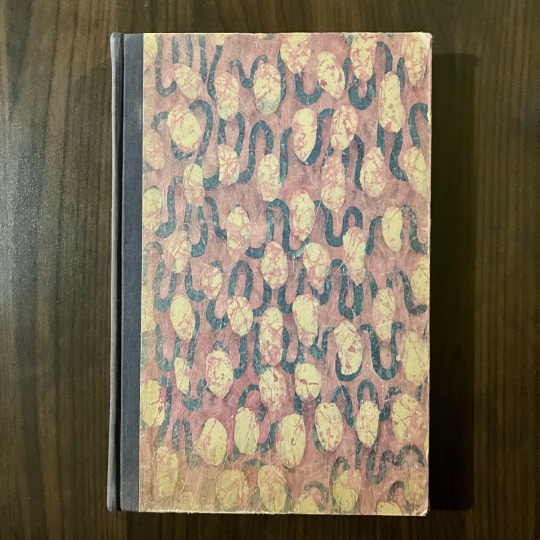
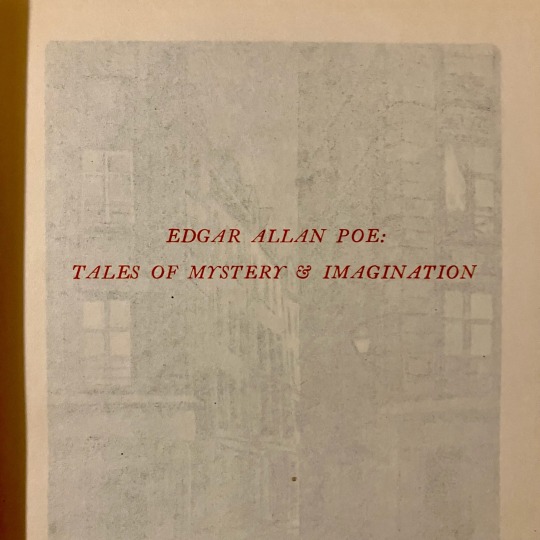






via @curiousvolumes
#edgar allan poe#william sharp#tales of mystery and imagination#vintage horror#vintage gothic#vintage books#curiousvolumes
10 notes
·
View notes
Photo

rare 1891 edition
4 notes
·
View notes
Text
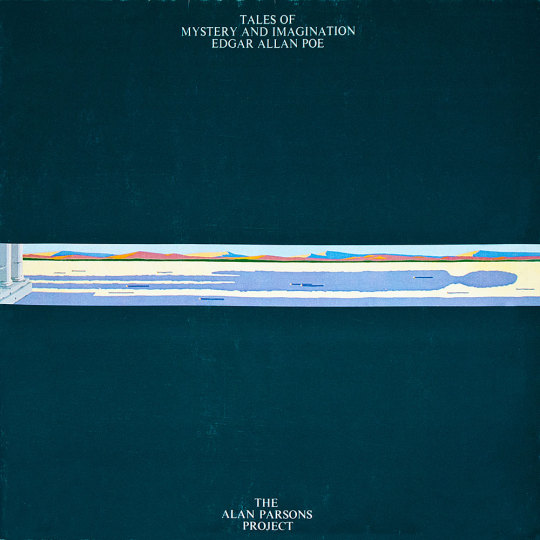
The Alan Parsons Project – Tales of Mystery and Imagination (1976)
11 tracks, 40 min 40 sec*
Rating: 9/10
Top Track: (The System of) Dr. Tarr and Professor Fether
Something my dad recommended to me a while back today with this retelling of some classic Edgar Allen Poe works. I know 2 Alan Parsons Project songs going into this one, neither of which are on this album. I should also go ahead and note that I'm listening to the original 1976 version, so not the 87 remix with Orson Wells narration.
*Another quick note to add re: tracks here. The Fall of the House of Usher is one of these where it's technically kind of one track with five distinct parts, but since Spotify splits it into its parts, 11 is the track count for this album. Both components will be considered, as a whole and separate.
Absolutely fantastic album. After hearing this I can say that combining this band with Poe just...makes sense. In a way that I can't even really describe. This all works incredibly well as one unit, and I'm familiar with most of the works referenced here and they work with the way my brain thinks of them. I have a pretty nitpicky reason for taking off a point from a 10 here, which lies in the 5 tracks spanning the Fall of the House of Usher. See, those are really fantastic within the context of each other and the rest of the album, but as one unit or as 5 individual tracks they kind of fall apart for me. Other than that piece, though, absolutely wonderful album. Favorite tracks were The Raven and To One in Paradise.
1 note
·
View note
Text
Edgar Allan Poe...with a progressive rock twist.
youtube
#the alan parsons project#edgar allan poe#the cask of amontillado#alan parsons#1976#tales of mystery and imagination#70s#Youtube
0 notes